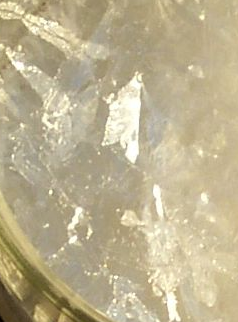|
Australodelphis
''Australodelphis mirus'' is an extinct Pliocene Delphinidae, dolphin. ''A. mirus'' is known from fossils found in the Sørsdal Formation, Mule Peninsula, Vestfold Hills, East Antarctica. The genus has been described as an example of convergent evolution with beaked whales. Name history The generic name ''Australodelphis'' is derived from the Latin ''australis'' meaning southern and ''delphis'' meaning dolphin, in reference to its discovery in Antarctica. The species name ''mirus'' is Latin for strange or wonderful, and was chosen to reflect the unexpected morphology (biology), morphology of the type specimen. While not described until 2002, the Biological type, type specimen of ''A. mirus'' was collected between 1985 and 1986, and a further four specimens were found between 1986 and 1994. Prior to the description of ''Australodelphis'' in 2002, the genus was mentioned briefly in several publications between 1988 and 1993. The holotype skull was figured in 1988 by R. E. Ford ... [...More Info...] [...Related Items...] OR: [Wikipedia] [Google] [Baidu] |
Mule Peninsula
Mule Peninsula is an irregularly shaped rocky peninsula between Ellis Fjord and Krok Fjord in the southern part of the Vestfold Hills of Princess Elizabeth Land, Antarctica. It was mapped from aerial photographs taken by the Lars Christensen Expedition of 1936–37 and named ''Breidnesmulen'' ("broad point snout") by Norwegian cartographers. Mule Peninsula is an adaptation of the original Norwegian name by the Antarctic Names Committee of Australia. Marine Plain A site on the peninsula known as Marine Plain, lying some 10 km south-east of Davis Station, is of exceptional scientific value because of its relevance to Antarctica's palaeoclimatic and palaeoecological record. Vertebrate fossil fauna found in the area includes ''Australodelphis mirus'', a Pliocene dolphin that is the first cetacean fossil recovered from the Antarctic margin of the Southern Ocean that postdates the break-up of Gondwana. Other fossil cetaceans have also been found in the area, as well as a fish, a ... [...More Info...] [...Related Items...] OR: [Wikipedia] [Google] [Baidu] |
Pliocene
The Pliocene ( ; also Pleiocene) is the epoch in the geologic time scale that extends from 5.333 million to 2.58See the 2014 version of the ICS geologic time scale million years ago. It is the second and most recent epoch of the Period in the Cenozoic Era. The Pliocene follows the Miocene Epoch and is followed by the Pleistocene Epoch. Prior to the 2009 revision of the geologic time scale, which placed the fou ... [...More Info...] [...Related Items...] OR: [Wikipedia] [Google] [Baidu] |
Gondwana
Gondwana () was a large landmass, often referred to as a supercontinent, that formed during the late Neoproterozoic (about 550 million years ago) and began to break up during the Jurassic period (about 180 million years ago). The final stages of break-up, involving the separation of Antarctica from South America (forming the Drake Passage) and Australia, occurred during the Paleogene. Gondwana was not considered a supercontinent by the earliest definition, since the landmasses of Baltica, Laurentia, and Siberia were separated from it. To differentiate it from the Indian region of the same name (see ), it is also commonly called Gondwanaland. Gondwana was formed by the accretion of several cratons. Eventually, Gondwana became the largest piece of continental crust of the Palaeozoic Era, covering an area of about , about one-fifth of the Earth's surface. During the Carboniferous Period, it merged with Laurasia to form a larger supercontinent called Pangaea. Gondwana ... [...More Info...] [...Related Items...] OR: [Wikipedia] [Google] [Baidu] |
Rostrum (anatomy)
Rostrum (from Latin ', meaning ''beak'') is a term used in anatomy for a number of phylogenetically unrelated structures in different groups of animals. Invertebrates * In crustaceans, the rostrum is the forward extension of the carapace in front of the eyes. It is generally a rigid structure, but can be connected by a hinged joint, as seen in Leptostraca. * Among insects, the rostrum is the name for the piercing mouthparts of the order Hemiptera as well as those of the snow scorpionflies, among many others. The long snout of weevils is also called a rostrum. * Gastropod molluscs have a rostrum or proboscis. * Cephalopod molluscs have hard beak-like mouthparts referred to as the rostrum. File:Washington DC Zoo - Macrobrachium rosenbergii 6.jpg, Crustacean: the rostrum of the shrimp '' Macrobrachium rosenbergii'' is serrated along both edges. File:Gminatus australis with Beetle.jpg, Insect: assassin bug piercing its prey with its rostrum File:Architeuthis beak.jpg, Ceph ... [...More Info...] [...Related Items...] OR: [Wikipedia] [Google] [Baidu] |
Basicranium
The base of skull, also known as the cranial base or the cranial floor, is the most inferior area of the skull. It is composed of the endocranium and the lower parts of the calvaria. Structure Structures found at the base of the skull are for example: Bones There are five bones that make up the base of the skull: *Ethmoid bone * Sphenoid bone *Occipital bone *Frontal bone *Temporal bone Sinuses *Occipital sinus *Superior sagittal sinus *Superior petrosal sinus Foramina of the skull * Foramen cecum *Optic foramen *Foramen lacerum * Foramen rotundum *Foramen magnum *Foramen ovale *Jugular foramen *Internal auditory meatus *Mastoid foramen *Sphenoidal emissary foramen *Foramen spinosum Sutures *Frontoethmoidal suture *Sphenofrontal suture *Sphenopetrosal suture * Sphenoethmoidal suture *Petrosquamous suture *Sphenosquamosal suture Other * Sphenoidal lingula * Subarcuate fossa *Dorsum sellae *Jugular process * Petro-occipital fissure * Condylar canal *Jugular tubercle *Tu ... [...More Info...] [...Related Items...] OR: [Wikipedia] [Google] [Baidu] |
Acetic Acid
Acetic acid , systematically named ethanoic acid , is an acidic, colourless liquid and organic compound with the chemical formula (also written as , , or ). Vinegar is at least 4% acetic acid by volume, making acetic acid the main component of vinegar apart from water and other trace elements. Acetic acid is the second simplest carboxylic acid (after formic acid). It is an important chemical reagent and industrial chemical, used primarily in the production of cellulose acetate for photographic film, polyvinyl acetate for wood glue, and synthetic fibres and fabrics. In households, diluted acetic acid is often used in descaling agents. In the food industry, acetic acid is controlled by the food additive code E260 as an acidity regulator and as a condiment. In biochemistry, the acetyl group, derived from acetic acid, is fundamental to all forms of life. When bound to coenzyme A, it is central to the metabolism of carbohydrates and fats. The global demand for aceti ... [...More Info...] [...Related Items...] OR: [Wikipedia] [Google] [Baidu] |
Epoxy Resin
Epoxy is the family of basic components or cured end products of epoxy resins. Epoxy resins, also known as polyepoxides, are a class of reactive prepolymers and polymers which contain epoxide groups. The epoxide functional group is also collectively called ''epoxy''. The IUPAC name for an epoxide group is an oxirane. Epoxy resins may be reacted ( cross-linked) either with themselves through catalytic homopolymerisation, or with a wide range of co-reactants including polyfunctional amines, acids (and acid anhydrides), phenols, alcohols and thiols (usually called mercaptans). These co-reactants are often referred to as hardeners or curatives, and the cross-linking reaction is commonly referred to as curing. Reaction of polyepoxides with themselves or with polyfunctional hardeners forms a thermosetting polymer, often with favorable mechanical properties and high thermal and chemical resistance. Epoxy has a wide range of applications, including metal coatings, composites, u ... [...More Info...] [...Related Items...] OR: [Wikipedia] [Google] [Baidu] |
Polyvinyl Acetate
Polyvinyl acetate (PVA, PVAc, poly(ethenyl ethanoate)), commonly known as wood glue, PVA glue, white glue, carpenter's glue, school glue, or Elmer's glue in the US, is a widely available adhesive used for porous materials like wood, paper, and cloth. An aliphatic rubbery synthetic polymer with the formula (C4H6O2)''n'', it belongs to the polyvinyl ester family, with the general formula − COOCHCH2��. It is a type of thermoplastic. Properties The degree of polymerization of polyvinyl acetate is typically 100 to 5000, while its ester groups are sensitive to base hydrolysis and slowly convert PVAc into polyvinyl alcohol and acetic acid. The glass transition temperature of polyvinyl acetate is between 30 and 45 °C depending on the molecular weight. PVAc dispersions such as Elmer's Glue-All contain polyvinyl alcohol as a protective colloid. In alkaline conditions, boron compounds such as boric acid or borax cause the polyvinyl alcohol to cross-link, forming tac ... [...More Info...] [...Related Items...] OR: [Wikipedia] [Google] [Baidu] |
Frost
Frost is a thin layer of ice on a solid surface, which forms from water vapor in an above- freezing atmosphere coming in contact with a solid surface whose temperature is below freezing, and resulting in a phase change from water vapor (a gas) to ice (a solid) as the water vapor reaches the freezing point. In temperate climates, it most commonly appears on surfaces near the ground as fragile white crystals; in cold climates, it occurs in a greater variety of forms. The propagation of crystal formation occurs by the process of nucleation. The ice crystals of frost form as the result of fractal process development. The depth of frost crystals varies depending on the amount of time they have been accumulating, and the concentration of the water vapor (humidity). Frost crystals may be invisible (black), clear ( translucent), or white; if a mass of frost crystals scatters light in all directions, the coating of frost appears white. Types of frost include crystalline frost ( ... [...More Info...] [...Related Items...] OR: [Wikipedia] [Google] [Baidu] |
Chlamys Tuftensis
The chlamys (Ancient Greek: χλαμύς : chlamýs, genitive: χλαμύδος : chlamydos) was a type of an ancient Greek cloak.Ancient Greek Dress ''Heilbrunn Timeline of Art History'', , 2000–2013. Retrieved 7 October 2013. By the time of the it was, although in a much larger form, part of the state costume of the emperor and high officials. It survived as such until at least the 12th century AD. The ephaptis (Ancient Greek: ἐφαπτίς) was a similar garment, typically worn by infantrymen.
|
Scallop
Scallop () is a common name that encompasses various species of marine bivalve mollusks in the taxonomic family Pectinidae, the scallops. However, the common name "scallop" is also sometimes applied to species in other closely related families within the superfamily Pectinoidea, which also includes the thorny oysters. Scallops are a cosmopolitan family of bivalves found in all of the world's oceans, although never in fresh water. They are one of the very few groups of bivalves to be primarily "free-living", with many species capable of rapidly swimming short distances and even migrating some distance across the ocean floor. A small minority of scallop species live cemented to rocky substrates as adults, while others attach themselves to stationary or rooted objects such as seagrass at some point in their lives by means of a filament they secrete called a byssal thread. The majority of species, however, live recumbent on sandy substrates, and when they sense the presence o ... [...More Info...] [...Related Items...] OR: [Wikipedia] [Google] [Baidu] |
Fragilariopsis Barronii
''Fragilariopsis'' is a genus of diatoms belonging to the family Bacillariaceae. The genus has cosmopolitan distribution. Species Species: *''Fragilariopsis acuta'' *''Fragilariopsis angulata'' *''Fragilariopsis atlantica ''Fragilariopsis'' is a genus of diatoms belonging to the family Bacillariaceae. The genus has cosmopolitan distribution. Species Species: *''Fragilariopsis acuta'' *''Fragilariopsis angulata'' *'' Fragilariopsis atlantica'' *''Fragilario ...'' *'' Fragilariopsis kerguelensis'' References {{Taxonbar, from=Q25366030 Bacillariales Diatom genera ... [...More Info...] [...Related Items...] OR: [Wikipedia] [Google] [Baidu] |


.jpg)




